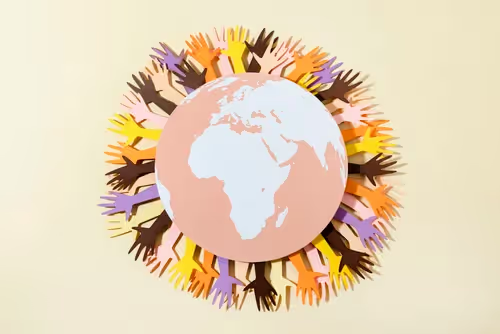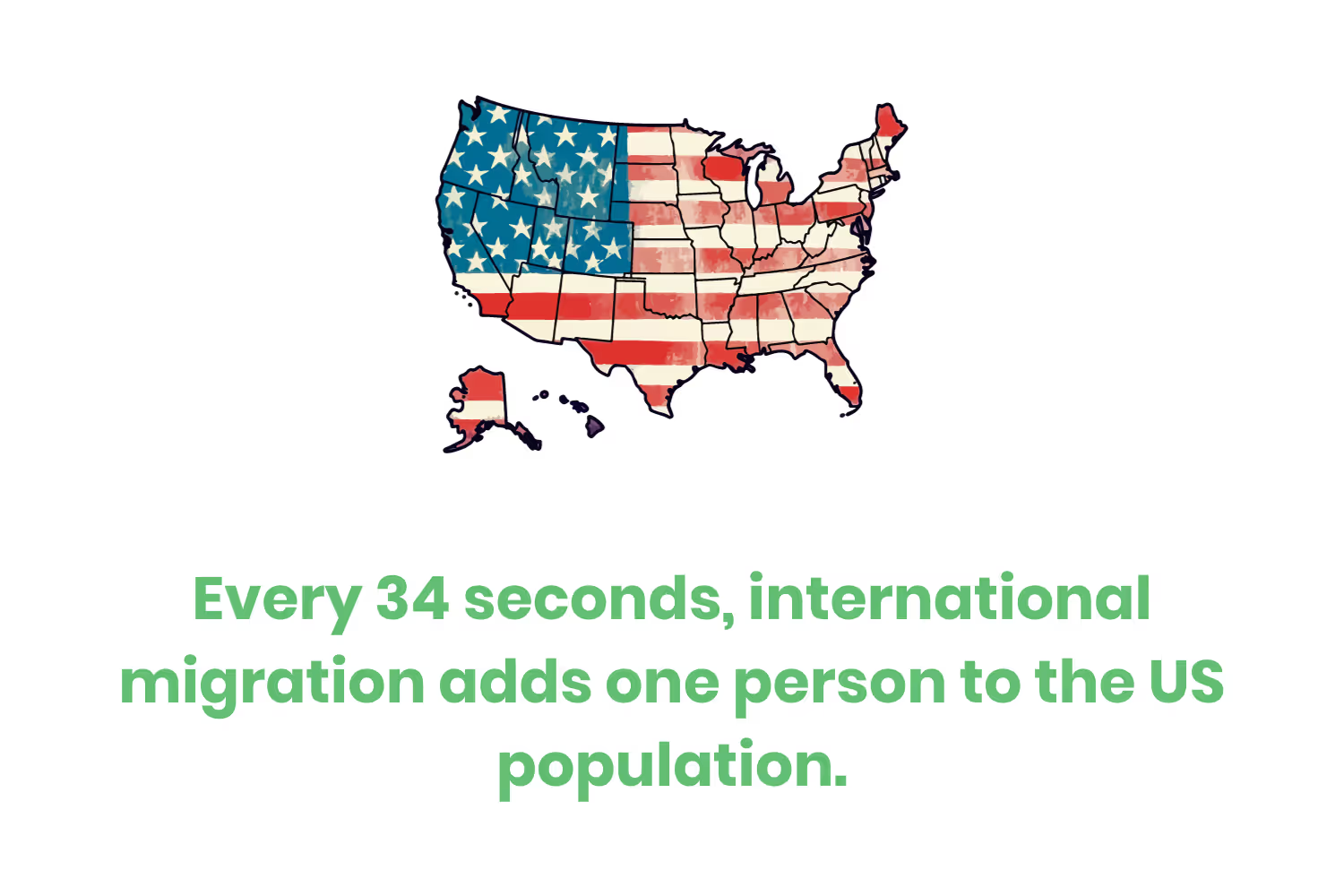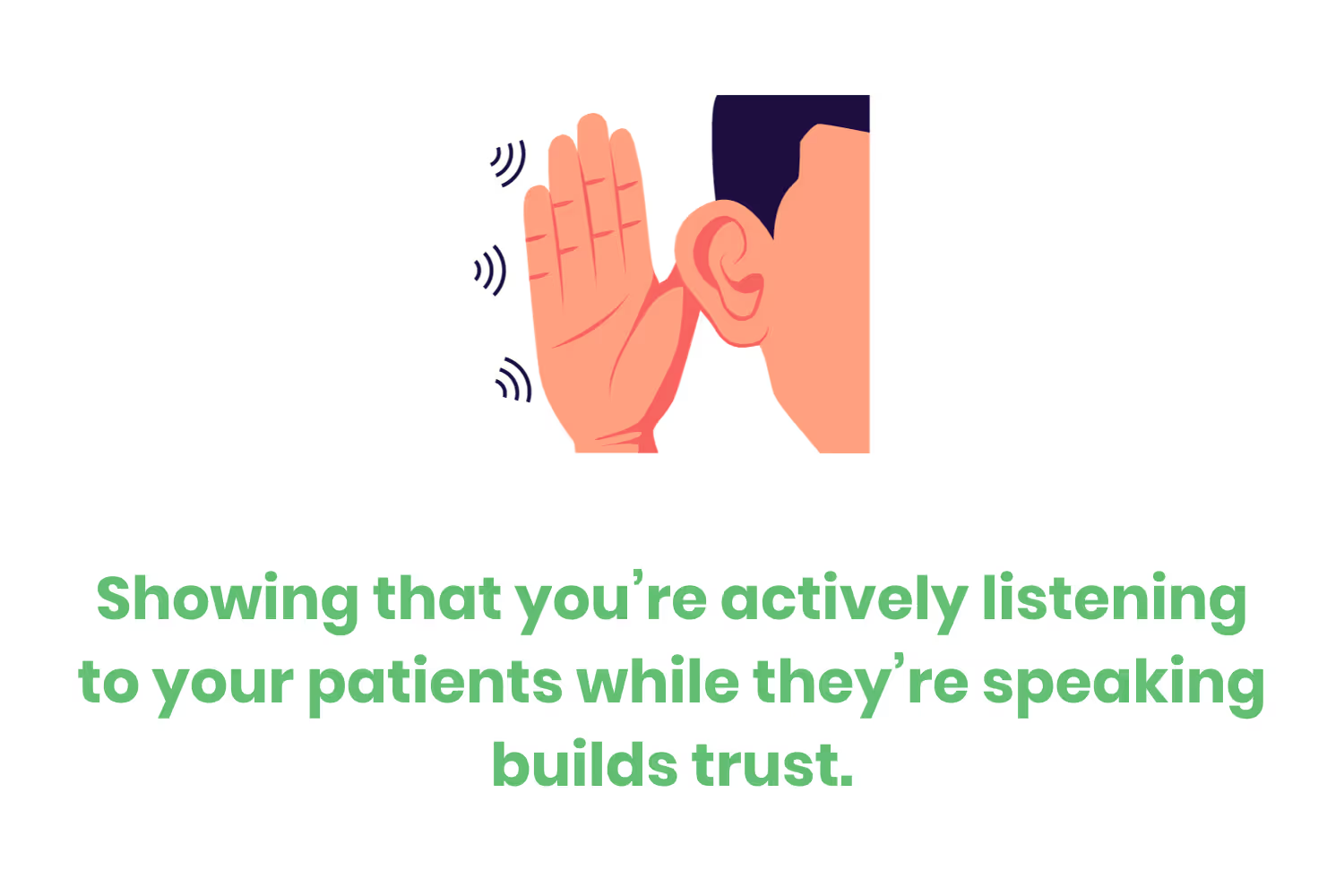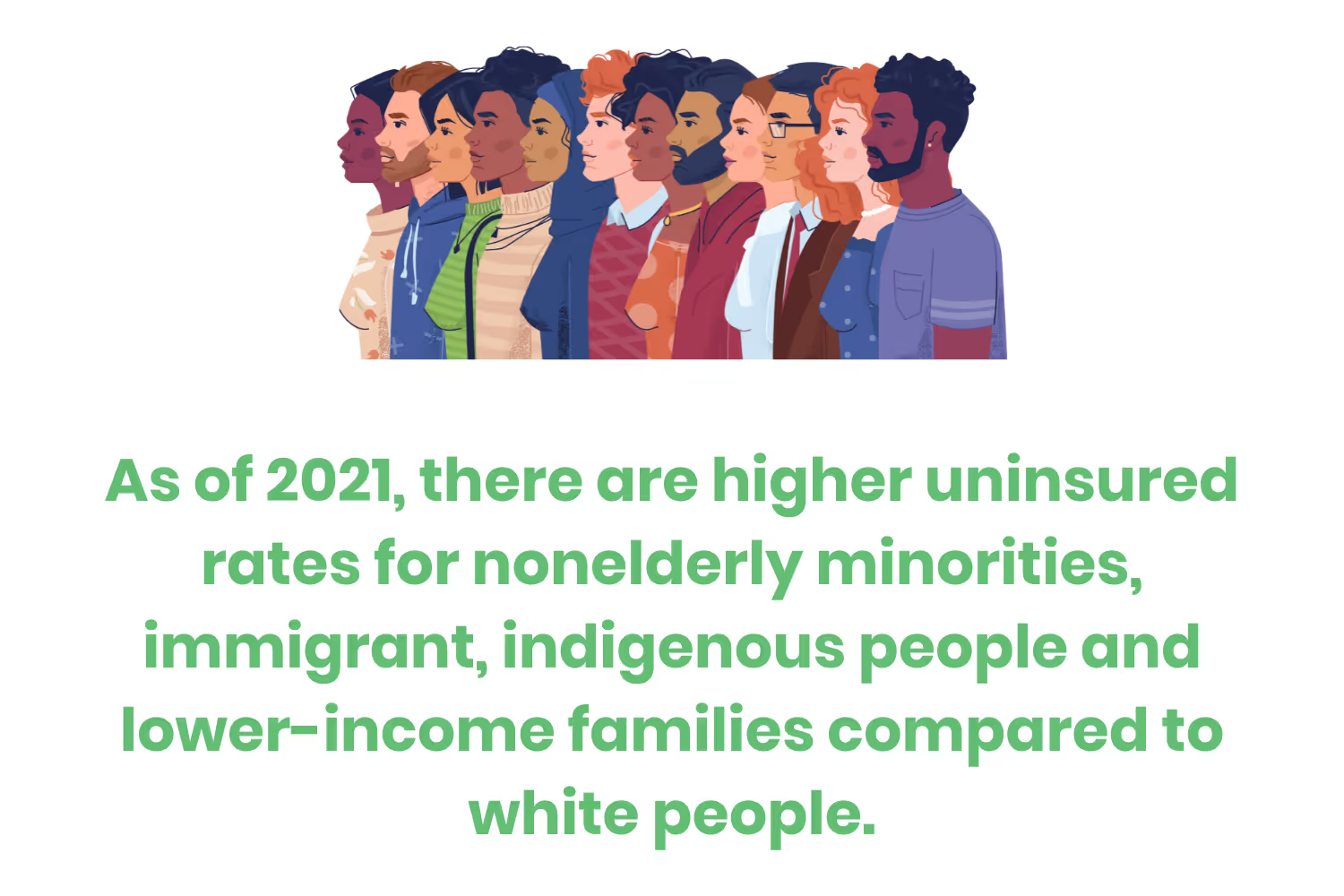Cultural Competence in Healthcare: 10 Reasons Why is Important
In this blog, we break down what cultural competency is and explain 10 reasons why it’s important for healthcare organizations.

When you hear the word “culture”, what comes to mind? Does a certain food or family tradition come to mind? Do you think of someone you know or do you think of yourself?
The reality is that culture is all around us. It involves the beliefs, customs, and behaviors of people from various groups. It’s often referred to as, “the way of life for an entire society.”
Part of living in modern-day America means seeing and meeting people from backgrounds different from you.
More than 40% of Americans now identify as one or more racial and ethnic groups.
As time goes by this percentage will increase.

By 2050, the Census Bureau projects…
- The number of non-Hispanic whites will fall
- The number of African Americans will have grown by roughly 30 percent
- The number of Hispanics by 60 percent and the number of Asian Americans will have more than doubled.
It’s important that as the population around us changes, our social and economic systems in healthcare do as well.
When treating and working alongside people coming from different backgrounds, we have to have an understanding of how to operate cross-culturally and apply necessary changes. How do we ensure that this is happening?
It starts with each one of us…and “cultural competence” is the term associated with the same.
In this blog, we break down what cultural competency is and explain 10 reasons why it’s important for healthcare organizations.
What is Cultural Competence?
Cultural competence is the ability to identify both similarities and differences between cultures. But it doesn’t stop there.
Someone who’s culturally competent not only distinguishes the similarities and differences across cultures but is also able to apply their knowledge appropriately in necessary setting situations.
Cultural competency is all about mindset. You have to have an open mind and welcome its concepts in order to grasp it.
Why is this the case?
It requires that you put aside what you deem as normal or common behavior and pick up an entirely new perspective. This is where we acknowledge our unconscious bias and embrace a new pattern of behavior.
Just because it may be different from what you’re used to doesn’t mean that it’s automatically deemed as “wrong” or “strange”.
Cultural competency isn’t only being aware of others’ cultural identity but your own cultural identity as well.
When health professionals become more aware of their cultural identity as well as their clients, it increases their ability to engage, assess, and treat clients from diverse backgrounds.
Healthcare workers in America see a melting pot of people ranging from every age, race, gender, ethnicity, and minority. For this reason, cultural competency is a necessity, especially in this day and age.

Here are a couple statistics from the 2020 Census Bureau:
- Every 34 seconds, international migration adds one person to the US population.
- Nationally, our younger population, with a Diversity Index score of 68.5%, is more racially diverse than the adult population, with a Diversity Index score of 58.3%.
As our nation becomes more culturally diverse, so will our healthcare system. In order to meet the needs of specific groups of people in the United States, healthcare offerings need to be able to take on different forms.
Unfortunately, it’s common that this isn’t the case…
Although there has been progress in healthcare disparities, incidences of illness and death continue more in diverse racial and ethnic groups in comparison with the U.S. population as a whole.
It’s common for racial and ethnic minorities to receive a lower quality of healthcare than nonminorities.
As healthcare professionals, it’s important to take care of each and every minority, immigrants, indigenous community that walks into our clinics here in the US.
Cultural competency takes a lot of self-reevaluation as well as a commitment to always applying and adapting it. Once achieved, the benefits of cultural competency in the healthcare industry are endless- for patients and industry workers alike.
Reason 1: Effective and Appropriate Communication
Knowing what to say to your clients as well as when to say it creates a sense of trust between you and your patients. Individuals that are culturally competent have a broader view. This gives them the ability to communicate more effectively across diverse groups.
Making sure that your patients understand what you’re saying will make them more likely to open up to you. Thus, they're more likely to express any questions or concerns they might be having.
Understanding what they’re saying is equally important, as well. Showing that you’re actively listening to your patients while they’re speaking builds trust.

Active listening can look like but isn’t limited to…
- Giving your full attention to your patients while they’re speaking
- Giving appropriate amounts of eye contact
- Make sure you’re using appropriate body language
- Occasional nodding and/or repeating things said
- Asking questions or for further clarification
Reason 2: Improved Quality and Care
This reason builds on the first one. By understanding your patient’s beliefs, values and backgrounds you’re able to communicate with them better. There are studies out there that prove that better communication leads to better care.
Thus, when you’re knowledgeable about how to treat specific clientele, you’re able to treat them better. You’re also able to make sure that you have the appropriate supplies necessary to accommodate them.
An example of this is providing services that specifically cater to a particular population where people within this group require customized products and or services to meet their unique needs.

Reason 3: Elimination of Unconscious Bias
The process of achieving cultural competency is a benefit in itself. But, in order to be culturally competent, it takes a lot of self-reflection and an open mind toward learning a new pattern of behavior. It isn’t easy, but it’s worth it.
The truth is that everyone has an unconscious bias, whether we want to admit it or not.
An unconscious bias is exactly what it sounds like. It’s being unaware that you’re leaning toward one side over another due to some type of similarity or familiarity.
When we’re able to pick out those unconscious cultural biases and understand where they’re coming from, we’re able to decrease our prejudices and discriminatory practices.

Examples of unconscious bias in the healthcare industry could be assuming a stereotype about a certain ethnicity and basing your communication with them on that bias, or failing to acknowledge the importance of certain practices a patient follows based upon their religion.
Cultural competence is an ongoing practice. We constantly have to assess the way in which we are thinking. When we recognize this and shift our thinking, it opens up a whole new mindset. The learning opportunities here are endless. For example, you could learn about alternate services and practices to offer to specific groups of people.
Reason 4: Improves Accessibility
To understand how cultural competency improves accessibility, let’s take a look at a real world example.
A clinic wants to analyze patterns of broken appointments. They conduct a study that examines variables such as age, gender, race and ethnicity. The analysis reveals that adolescents have the highest rate of broken appointments.
With this information, the clinic can now target specific strategies to help reduce the amount of broken appointments among adolescents. The solutions listed are to have weekend hours, provide free transportation, and set up reminder calls from caseworkers.
Implementing research similar to this scenario can give healthcare workers greater insight into their clientele. how to better accommodate their wants and needs in an attempt to treat them better.
Reason 5: More Patient Participation and Engagement
When your clientele feels that they’re heard, they will feel more comfortable asking questions and giving feedback. Ways to engage patients into participating could be simply demonstrating interest in learning their language.
Language barriers between you and a patient can put a limitation on the level of conversation you’re able to have. This is where miscommunications happen. Now I’m not saying that you have to learn every language spoken on planet earth, but downloading DuoLingo to your phone might not be a bad idea.
Expressing interest in a patient's native language can help bridge divides. Not to mention it demonstrates mutual respect. Learning how to sign for sign language is a great way to engage with a specific group of patients as well.

Making patients more engaged goes beyond language. As I am sure you’ve heard before, actions speak louder than words. When you’re culturally competent you’re able to interpret body language cues, tone of voice, and empathize through active listening which we discussed earlier with your patients.
Reason 6: Increased Patient Safety
Patient safety is the prevention of harm to patients. The 5 elements of patient safety are transparency, leadership, policies, validation, and a just culture.
When you are culturally competent, these 5 elements will follow.
Reason 7: Reduced Conflicts
Throughout this blog post, we painted a few pictures and explained some scenarios of what an appointment between a doctor and a patient may look like in the healthcare setting.
In these settings, setbacks such as language barriers, misunderstandings, and unconscious biases and misunderstandings can occur. It’s not a matter of if these misunderstandings happen, it’s a matter of when.
Luckily, a culturally competent person is able to diffuse the situation by not letting it escalate or turn into a conflict.

It may be true that you and your patient might not see eye to eye or agree on the same thing. In a situation related to culture, being able to navigate the conversation so that you don’t disrespect the other person’s belief is important. Cultural competence doesn’t mean that you have to adopt another person’s set of values as your own. Instead, you’re able to approach them in a nonjudgmental way and express a desire to try to help them and not change them.
Reason 8: Reduced Care Disparities
Healthcare disparities are differences in accessibility to healthcare services as well as variations in rates of disease occurrence and disabilities for specific populations based on socioeconomic, preventable characteristics.
Health disparities take on many forms for racial and ethnic minorities in the United States. It’s a very prevalent and real issue. Disparities may look like access to care, poor quality of care, or community features.
As of 2021, there are higher uninsured rates for nonelderly minorities, immigrant, indigenous people and lower-income families compared to white people.
Some of these groups, they’re eligible for coverage through a variety of services but aren’t aware of are fearful of the enrollment process due to confusion about eligibility policies, difficulty navigating enrollment processes, and language and literacy problems.
Disparities are preventable. A culturally competent person is able to combat these disparities in how they respond.

When someone is culturally competent, they’re aware of healthcare disparities and make efforts to increase health equity. Health equity exists when everyone, regardless of their race or ethnicity, has the opportunity to experience their highest level of health.
People of color and other underserved groups experience higher rates of illness and death across a wide range of health conditions and this is just happening in America. This decreases the overall health of our nation as we become more and more culturally diverse.
Research shows that health disparities are costly due to excess medical care costs, lost productivity, and additional economic losses due to premature deaths each year.
Cultural competency is an awareness and self-reflection of these disparities going on and how to treat the same. This could look like conducting research on certain groups of people and how they can be better treated for certain illnesses. This can also look like walking patients through the process of enrolling for coverage and getting them access to services.
Reducing healthcare disparities saves the healthcare industry time, money, and most importantly, lives.
Reason 9: Saves Time
Conducting research on how to better cater to specific groups assists you in learning how to allocate healthcare resources and workers’ time wisely.
Effective communication and knowing how to dispute misunderstandings and conflicts also saves time. Less misunderstandings result in a better use of time.
Reason 10: Saves Money
We have all probably heard the phrase before, “time is money.” More time spent becoming culturally competent leads to monetary benefits.
A decrease in disparities and conflict reduces costs. Knowledge and knowing how to assess situations in the healthcare field ultimately leads to saving money. Being aware of what to invest money into to reach certain patients with knowledge backed up decreases costs.
Conclusion
The best way to achieve cultural competency is by implementing training. Diversity and inclusion training is a great way to make employees aware of different cultures and maybe even more tuned into their own.
The United States is full of all different shapes and sizes of people coming from an array of backgrounds and cultures. The healthcare industry simply cannot ignore the importance of cultural competency.
Understanding other cultures comes with two main benefits. First, it benefits patients or clients that you’re seeing. Second, it helps you to better understand people in your workplace as well. It gives you greater knowledge of how to approach situations and treat people accordingly.
Emphasize your product's unique features or benefits to differentiate it from competitors
In nec dictum adipiscing pharetra enim etiam scelerisque dolor purus ipsum egestas cursus vulputate arcu egestas ut eu sed mollis consectetur mattis pharetra curabitur et maecenas in mattis fames consectetur ipsum quis risus mauris aliquam ornare nisl purus at ipsum nulla accumsan consectetur vestibulum suspendisse aliquam condimentum scelerisque lacinia pellentesque vestibulum condimentum turpis ligula pharetra dictum sapien facilisis sapien at sagittis et cursus congue.
- Pharetra curabitur et maecenas in mattis fames consectetur ipsum quis risus.
- Justo urna nisi auctor consequat consectetur dolor lectus blandit.
- Eget egestas volutpat lacinia vestibulum vitae mattis hendrerit.
- Ornare elit odio tellus orci bibendum dictum id sem congue enim amet diam.
Incorporate statistics or specific numbers to highlight the effectiveness or popularity of your offering
Convallis pellentesque ullamcorper sapien sed tristique fermentum proin amet quam tincidunt feugiat vitae neque quisque odio ut pellentesque ac mauris eget lectus. Pretium arcu turpis lacus sapien sit at eu sapien duis magna nunc nibh nam non ut nibh ultrices ultrices elementum egestas enim nisl sed cursus pellentesque sit dignissim enim euismod sit et convallis sed pelis viverra quam at nisl sit pharetra enim nisl nec vestibulum posuere in volutpat sed blandit neque risus.

Use time-sensitive language to encourage immediate action, such as "Limited Time Offer
Feugiat vitae neque quisque odio ut pellentesque ac mauris eget lectus. Pretium arcu turpis lacus sapien sit at eu sapien duis magna nunc nibh nam non ut nibh ultrices ultrices elementum egestas enim nisl sed cursus pellentesque sit dignissim enim euismod sit et convallis sed pelis viverra quam at nisl sit pharetra enim nisl nec vestibulum posuere in volutpat sed blandit neque risus.
- Pharetra curabitur et maecenas in mattis fames consectetur ipsum quis risus.
- Justo urna nisi auctor consequat consectetur dolor lectus blandit.
- Eget egestas volutpat lacinia vestibulum vitae mattis hendrerit.
- Ornare elit odio tellus orci bibendum dictum id sem congue enim amet diam.
Address customer pain points directly by showing how your product solves their problems
Feugiat vitae neque quisque odio ut pellentesque ac mauris eget lectus. Pretium arcu turpis lacus sapien sit at eu sapien duis magna nunc nibh nam non ut nibh ultrices ultrices elementum egestas enim nisl sed cursus pellentesque sit dignissim enim euismod sit et convallis sed pelis viverra quam at nisl sit pharetra enim nisl nec vestibulum posuere in volutpat sed blandit neque risus.
Vel etiam vel amet aenean eget in habitasse nunc duis tellus sem turpis risus aliquam ac volutpat tellus eu faucibus ullamcorper.
Tailor titles to your ideal customer segment using phrases like "Designed for Busy Professionals
Sed pretium id nibh id sit felis vitae volutpat volutpat adipiscing at sodales neque lectus mi phasellus commodo at elit suspendisse ornare faucibus lectus purus viverra in nec aliquet commodo et sed sed nisi tempor mi pellentesque arcu viverra pretium duis enim vulputate dignissim etiam ultrices vitae neque urna proin nibh diam turpis augue lacus.




